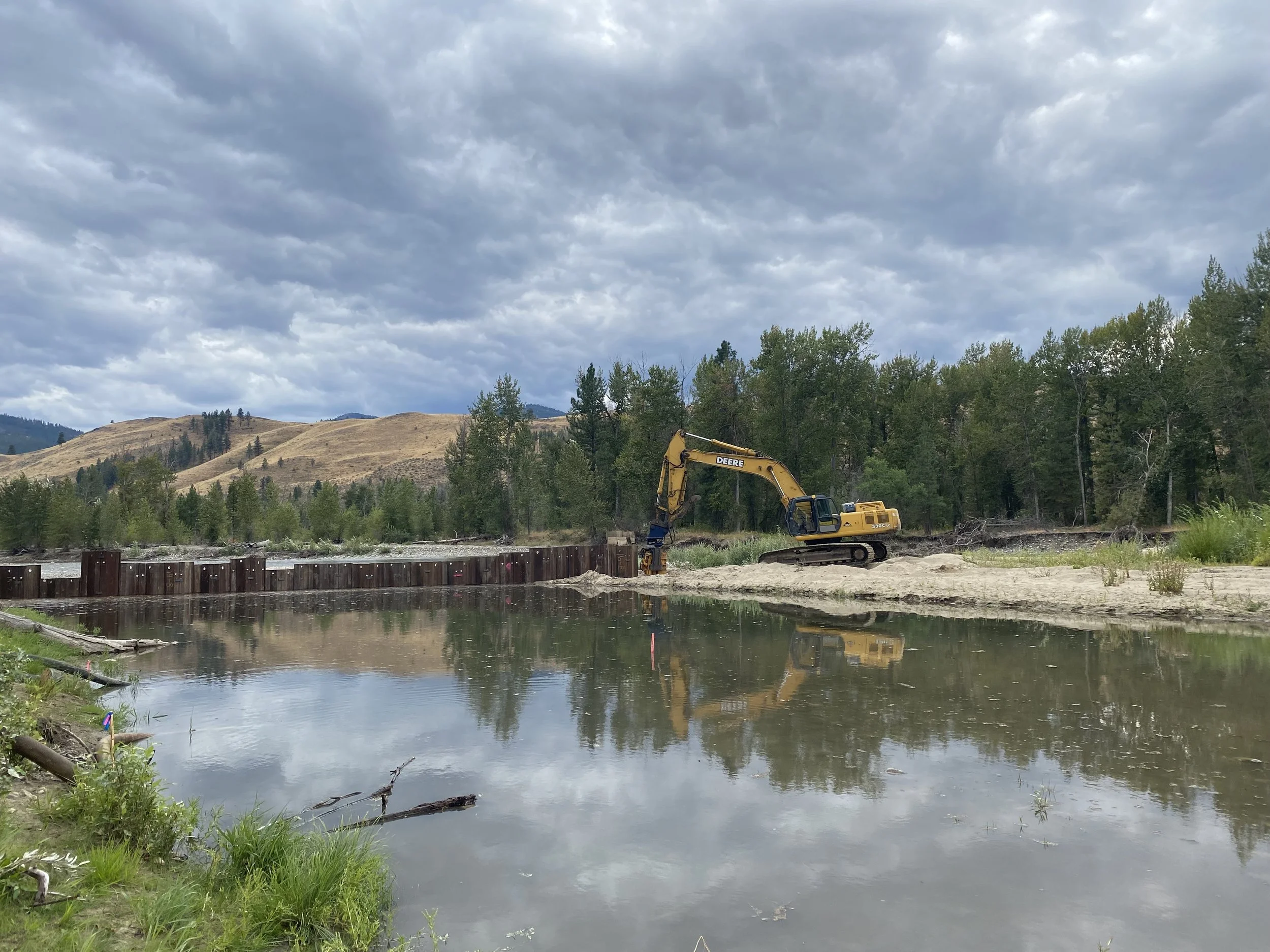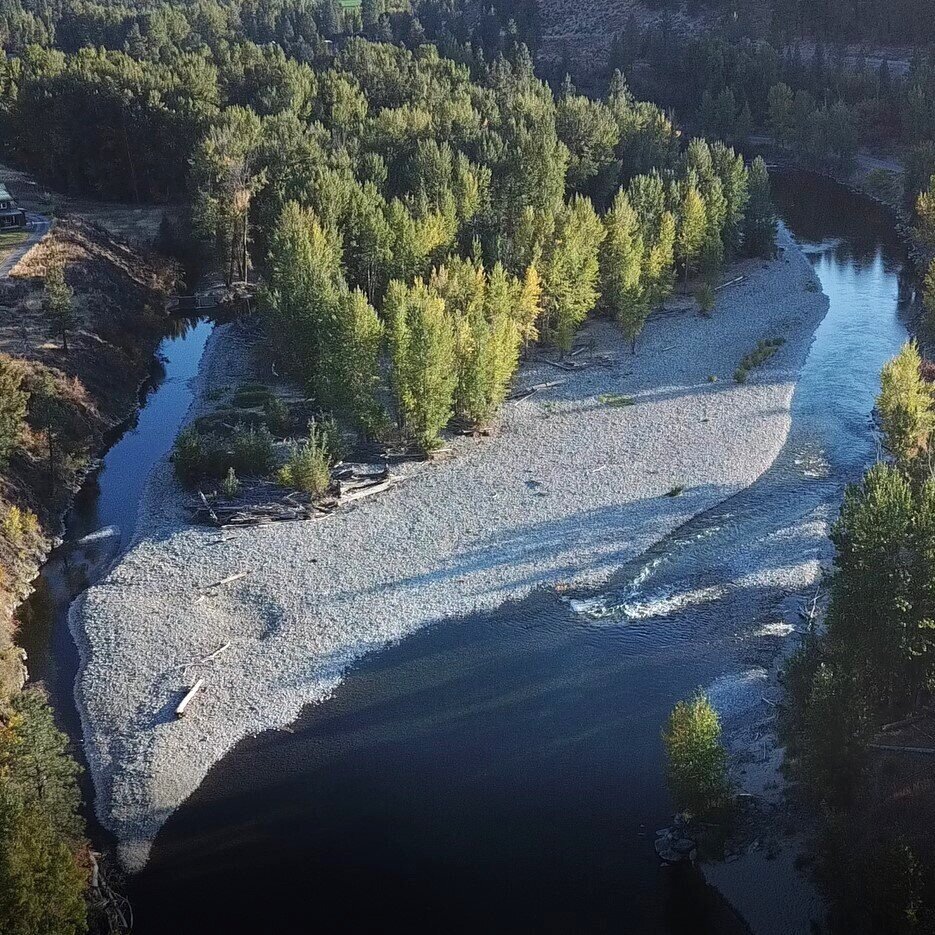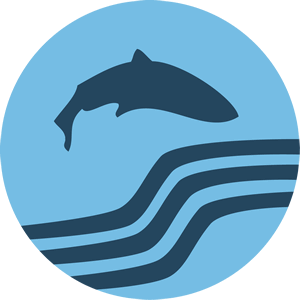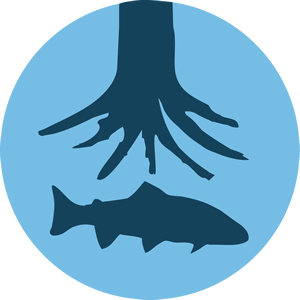Eagle Rocks Worksite
Work at the Eagle Rocks worksite was completed in September 2024. Maintenance of riparian plantings will continue through 2029 to promote successful establishment of the plantings. Maintenance work will include fencing, irrigation, weed management and supplemental planting as needed to meet project goals.
Where is this project?
The Eagle Rocks Project was constructed on the Methow River in the vicinity of the Riverbend RV Park, just north of the town of Twisp. The project area included both sides of the river and bed lands controlled by WA Department of Natural Resources. Work outside the active river channel was on privately-owned lands and was constructed with support of the landowners.
Why is this project being constructed?
Historically, the river migrated side to side across the entire valley floor, and the alignment of the river was continuously changing. This movement would create important habitat for salmon, including floodplain areas, side channels and wood accumulations. Restoring habitat for steelhead and spring Chinook within the Methow River between Twisp and Winthrop has been identified as a high priority in the Upper Columbia Biological Strategy.
The project will address the highest priority ecological concerns identified within the reach including:
Increased quantity and availability of floodplain and side channel habitats
Increase instream channel complexity
Increase the quantity of native riparian buffer
Reduce impact of anthropogenic barriers
Location of Eagle Rocks relative to local landmarks
What did this project do to address ecological concerns and improve fish habitat?
Channel grading to increase side channel connectivity
A mid channel bar splits the main channel into two flow paths at this location. The primary flow path is to the west and prior to project construction the eastern channel went mostly dry in late summer and fall. The project excavated the eastern channel to increase the amount of water flowing into this channel. This grading in conjunction with strategically placed engineered wood structures will promote year round flow through this channel.
Floodplain Grading to increase floodplain connectivity
The floodplain on the eastern side of river is relatively high and only gets water during very high water. This project excavated a portion of the floodplain adjacent in the river. This newly constructed lower floodplain area will get wet each spring during high water and increase the flood capacity of the river channel. Water flowing on the newly constructed floodplain bench will be shallow and slow moving. This will provide great habitat for young fish and help to establish riparian vegetation.
Engineered logjams and other wood placements to increase complexity
Large wood structures were placed along the banks and on a mid channel bar. Some wood structures are designed to encourage flow into the eastern flow channel, but most wood structures of designed to mimic naturally occurring wood accumulations and provide habitat for endangered salmon.
Planting of native riparian species
A restored riparian will increase instream shading, replenish the large wood cycle and re-establish more naturally moderated channel migration rates
When was this project constructed?
Work at the Eagle Rocks worksite was completed in September 2024. Maintenance of riparian plantings will continue through 2029 to promote successful establishment of the plantings. Maintenance work will include fencing, irrigation, weed management and supplemental planting as needed to meet project goals.
Sheet piles, giant corrugated metal plates, were driven into the ground to isolate the work areas and help control water and sediment and prevent fish from entering the work area.
Who is doing this project?
This project was developed by the Methow Salmon Recovery Foundation in coordination with a multi-agency Project Development Team, landowners and project partners. Bureau of Reclamation provided funding and technical support for project design. Project construction was funded by Rock Island Habitat Conservation Plan Tributary Committee, and Priest Rapids Coordinating Committee, Salmon Recovery Funding Board, and Ecology Floodplain by Design.
This project was be built by Pipkin Construction, a crew based out of Wenatchee. Plantings will be completed by Methow Natives, a local supplier of native plants and restoration expert. Methow Salmon prioritizes working with local and regional contractors. Contractors are encouraged to contact us to be placed on our contractor list.











